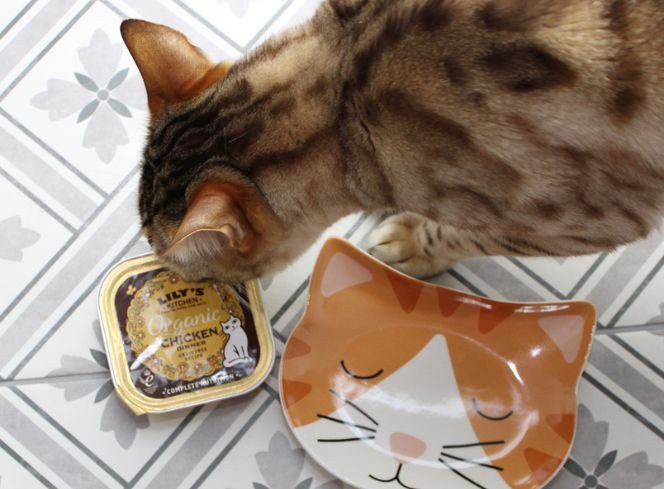As our beloved feline companions gracefully age, their nutritional needs evolve, requiring special attention and tailored care in their diet. Just like humans, senior cats require a diet that supports their aging bodies, maintains their health, and caters to any specific health concerns that arise in their later years.
The market is flooded with numerous options for senior cat food, from wet to dry formulas, promising optimal nutrition for aging cats. To aid in your quest for the best nourishment for your furry friend, we’ve meticulously curated a comprehensive guide to the top-rated cat foods for older cats, addressing their unique needs and concerns.
Understanding Senior Cat Nutrition
Before delving into specific product recommendations, it’s crucial to grasp the essential nutritional requirements of older cats. As cats age, their metabolism changes, leading to decreased activity levels and potential health issues such as arthritis, dental problems, and kidney disease.
Ideal senior cat food should focus on the following key aspects:
- Protein Content: A high-quality protein source is vital for maintaining muscle mass and supporting overall health.
- Reduced Calories: As older cats tend to be less active, their calorie intake needs to be adjusted to prevent weight gain.
- Joint and Bone Health: Ingredients like glucosamine and chondroitin aid in maintaining joint health and mobility.
- Digestive Health: Easily digestible ingredients are crucial to prevent digestive issues, especially for seniors with sensitive stomachs.
- Kidney Support: Formulas low in phosphorus can support aging kidneys and prevent kidney-related issues.
Best Senior Cat Foods: Wet and Dry Options
Best Senior Dry Cat Foods:
- IAMS Vitality Senior Dry Cat Food With Ocean Fish - IAMS Vitality Senior Dry Cat Food is a complete formula made for cats 7 years and older. It offers a wheat free recipe with lower fat and calories for healthy weight maintenance. Formulated with beet pulp and prebiotics, cats will have improved digestion, as well as essential nutrients for healthy joints. Plus, it is free of any artificial colours, flavours, or GMOs.
- PRO PLAN Original Senior Dry Cat Food with LONGEVIS Salmon - PRO PLAN Original Senior Dry Cat Food with LONGEVIS Salmon provides 100% of the essential nutrients and Omega-6 fatty acids necessary for cats over 7 years of age. This specialised formula includes prebiotics, proven to help support balanced gut microflora for digestive health, as well as ingredients to help support brain health. All of this is in a delicious and highly palatable recipe featuring salmon as the number one ingredient for a flavour cats love.
- Harringtons Complete Dry Senior Cat Food with Chicken - Refresh your feline's nine lives with Harringtons Complete Dry Senior Cat Food with Chicken! This nutritious meal contains no artificial colours or flavours, freshly prepared chicken, and antioxidants and omega 3 oils to keep your cat purring with health and happiness. It's the perfect food for adult cats from 7 years, so don't let your little furball miss out!
- Lily's Kitchen Fish & Turkey Senior Dry Cat Food - A grain-free, protein-rich formula that supports joint health and includes vitamins and minerals suitable for aging cats. Made with 70% prepared fish and turkey you know the It contains vitamins, including glucosamine and chondroitin for joint support, as well as chelated minerals and a combination of omega 3 and 6 for all round health. The prebiotics in the formula will help your senior cat maintain a health gut.
Best Senior Wet Cat Foods:
- PRO PLAN Sterilised 7+ Wet Cat Food with Turkey - Treat your four-legged friend to a real feast with PRO PLAN Sterilised Adult Wet Cat Food with Turkey! Containing sterilised turkey terrine for a delicious taste, it supports key vital functions and helps maintain urinary health. Plus, with the science-based nutrition developed by Purina veterinarians, it's so much more than just a tasty snack!
- Whiskas 7+ Senior Cat Poultry Feasts in Jelly - Formulated specifically for senior cats, this 100% complete and balanced food helps support healthy digestion. Additionally, essential taurine is included to promote a healthy heart. Vitamins and iron aid in keeping cats active and spirited, while a combination of four poultry flavours in jelly provide a wide variety of taste options.
- Lily's Kitchen Marvellously Mature Chicken Supper Cat Food - Specially created for fans of more advanced years, this Marvellously Mature Chicken Supper recipe contains all the nutrients your wise cat needs to stay healthy and happy. Made with 60% freshly prepared chicken, pork, trout and lamb, the carefully chosen combination of meats and offal will keep your cat interested and smitten with their supper. Blend of vitamins, chelated minerals and omegas for all round health, and carrots to give it a soft pâté texture - great for older, sensitive teeth
- Gourmet Gold Senior Pate Salmon & Ocean Fish Cat Food - Gourmet Gold Senior Pate Salmon & Ocean Fish Cat Food is a nutritious meal specially formulated for cats over 7 years old. This tender pate contains salmon, providing your cat with the essential nutrients she needs to support her bones, joints, and teeth. Free of added colorants, artificial flavourings, and preservatives, this meal is made with only high-quality ingredients. Your aging feline companion will enjoy a delicious and healthy meal.
Selecting the best cat food for your aging feline companion involves careful consideration of their individual health needs and preferences. While the market boasts an array of options, it's essential to prioritise high-quality ingredients, tailored nutrition, and brands with a reputation for addressing senior cat health concerns.
Remember, consulting your veterinarian is always wise when making dietary changes for your senior cat. By prioritising their specific health requirements, you can ensure a happy, healthy, and comfortable life for your cherished older feline friend.

































































































